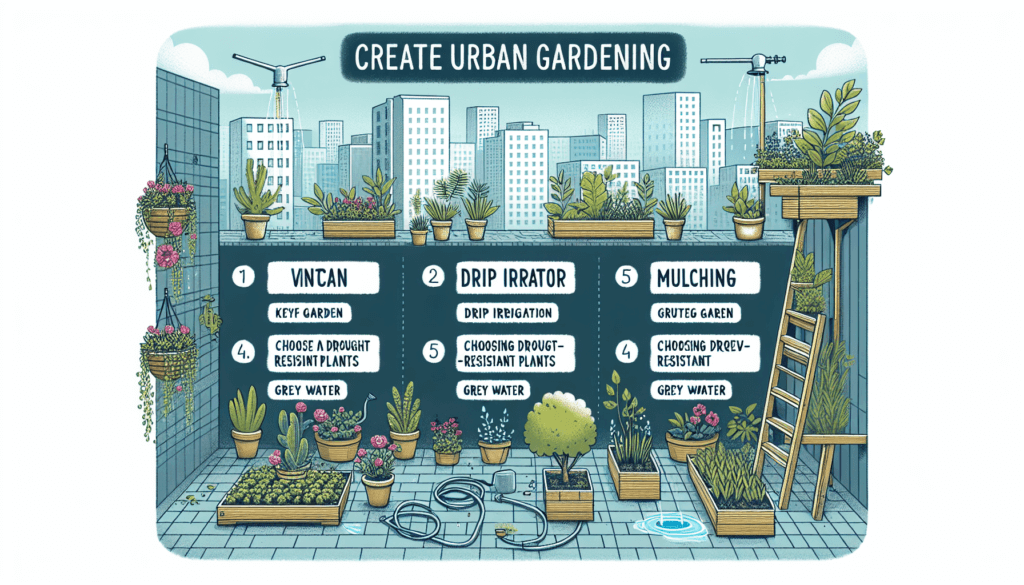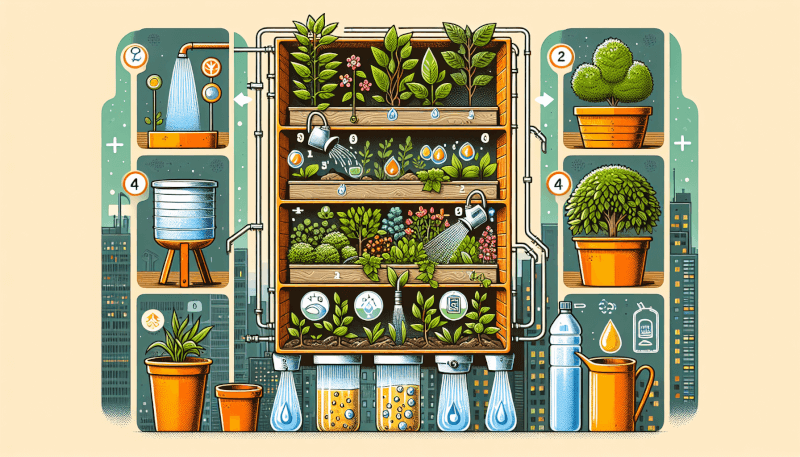Are you an urban gardener looking for ways to make your garden more water-efficient? Look no further! In this article, we will explore the top 5 methods to maximize water efficiency in your urban garden. By implementing these strategies, you can reduce water waste, conserve resources, and still enjoy a thriving garden. From installing drip irrigation systems to using mulch, we’ve got you covered. So, let’s get started and transform your urban garden into a sustainable oasis!
Choosing the Right Plants
Having the right plants in your garden is the first step towards maximizing water efficiency. By selecting native and drought-tolerant plants, you can ensure that they are well-suited to the local climate and require less water to thrive. Native plants are naturally adapted to the local environment, which means they are more likely to survive and flourish with minimal irrigation. Drought-tolerant plants, on the other hand, are specifically bred to withstand periods of water scarcity and can thrive in arid conditions.
When choosing plants for your garden, another important factor to consider is opting for perennials. Unlike annuals, which require replanting every year, perennials come back year after year. This not only saves you time and effort but also reduces the amount of water needed to maintain your garden. Perennials have deeper root systems, which allow them to access water sources more efficiently, making them a great choice for water-conscious gardening.
In addition to selecting native and drought-tolerant plants, it is important to choose plants with low water requirements. Some plants naturally require less water than others and can thrive with minimal irrigation. Research and choose plant varieties that are known to have low water requirements, such as succulents, lavender, and ornamental grasses. By incorporating these plants into your garden, you can minimize water usage without compromising on the beauty and aesthetics of your outdoor space.
Using mulch is another effective technique for conserving moisture in your garden. Mulch acts as a protective barrier, preventing water from evaporating too quickly and keeping the soil moist for longer periods. By applying a layer of mulch around your plants, you can reduce water loss due to evaporation, suppress weed growth, and maintain a more consistent soil temperature. Organic mulches, such as wood chips or straw, also provide additional benefits by improving soil structure and promoting the growth of beneficial microorganisms.
Implementing Smart Irrigation Techniques
Once you have chosen the right plants, it’s time to implement smart irrigation techniques to optimize water usage in your garden. One of the most efficient methods is installing drip irrigation systems. Unlike traditional sprinkler systems that spray water over a large area, drip irrigation delivers water directly to the roots of plants, minimizing water wastage through evaporation and runoff. By providing a slow, steady supply of water, drip irrigation ensures that plants receive the exact amount of water they need without excess.
Another water-saving technique is using rainwater harvesting. Instead of relying solely on municipal water sources, you can collect and utilize rainwater to irrigate your garden. Installing rain barrels or a larger rainwater harvesting system allows you to capture and store rainwater for later use. This not only reduces your reliance on treated water but also saves money on your water bill. Rainwater harvesting is particularly beneficial in areas with limited water resources or during dry seasons when rainfall is scarce.
Utilizing sensors and timers is another smart way to manage your garden’s irrigation system. Soil moisture sensors can provide real-time data on the moisture level in the soil, allowing you to water your plants only when necessary. This prevents overwatering and ensures that water is used efficiently. Timers can also be used to schedule irrigation cycles, allowing you to water your garden at optimal times when evaporation rates are low, such as early morning or late evening.
Practicing watering at optimal times is another important aspect of smart irrigation. Watering during the hottest parts of the day, when temperatures are high and evaporation rates are at their peak, can result in significant water loss. By watering your garden during cooler periods, you can reduce evaporation and ensure that the maximum amount of water reaches the roots of your plants. This not only conserves water but also helps to prevent heat stress in your plants.
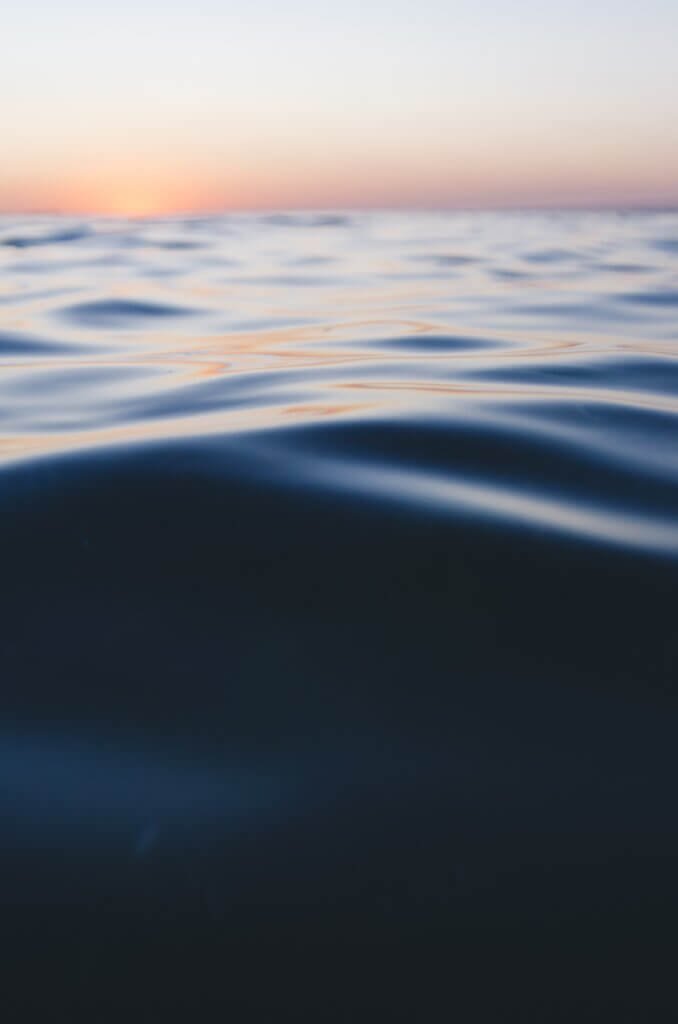
Promoting Soil Health
In addition to choosing the right plants and implementing smart irrigation techniques, promoting soil health is crucial for maximizing water efficiency in your garden. Healthy soil retains water better, reduces erosion, and creates a favorable environment for plant growth. There are several ways you can improve soil health and enhance water retention.
One effective method is adding compost to your soil. Compost is a valuable source of organic matter that improves soil structure, increases its water-holding capacity, and enhances nutrient availability for plants. By incorporating compost into your garden beds or potting mixes, you can significantly improve water retention and reduce the need for frequent watering. Compost also helps to break up compacted soil, allowing water to penetrate deeper into the root zone.
Implementing raised beds is another strategy for promoting soil health and water efficiency. Raised beds provide better drainage and aeration, which prevent waterlogging and allow excess water to drain away more easily. This helps to prevent water runoff and ensures that water is effectively absorbed by the plants’ roots. Raised beds also tend to warm up faster in the spring, allowing for earlier planting and extended growing seasons.
Incorporating organic matter into the soil is essential for improving its water-holding capacity. Organic matter, such as well-rotted manure or leaf compost, acts like a sponge, absorbing and retaining water for plants to use as needed. By adding organic matter to your soil, you can increase its ability to retain moisture, reduce water runoff, and create a more favorable environment for beneficial soil organisms.
Avoiding overwatering is another key practice for promoting soil health and water efficiency. Overwatering not only wastes water but also leads to waterlogged soil, which can suffocate plant roots and promote the growth of harmful pathogens. It is important to establish a watering routine based on the specific needs of your plants and the moisture level of your soil. Regularly monitor the soil moisture and adjust your watering schedule accordingly to avoid both water stress and oversaturation.
Applying Water-Saving Techniques
In addition to choosing the right plants, implementing smart irrigation techniques, and promoting soil health, there are several water-saving techniques you can apply in your garden to further maximize water efficiency.
Avoiding overhead sprinklers is one of the simplest ways to conserve water. Overhead sprinklers often result in water loss due to evaporation, wind drift, and inefficient water distribution. By switching to more targeted watering methods, such as drip irrigation or soaker hoses, you can ensure that water is delivered directly to the roots of your plants without wastage.
Practicing deep watering is another effective technique for water conservation. Instead of frequently watering your plants with shallow, short bursts of water, it is better to provide a deep soak that allows water to penetrate deeper into the soil. This encourages the development of deeper root systems, which are better able to access moisture in the soil. Deep watering also helps to reduce surface evaporation and encourages plants to become more drought-tolerant.
Watering at the base of plants is another water-saving technique to consider. Instead of watering the entire garden bed, focus on delivering water directly to the base of each plant. This ensures that water reaches the roots where it is needed the most and minimizes water wastage on areas where it is not necessary.
Using a watering can or hose nozzle with a shut-off valve is another simple yet effective way to save water. By controlling the flow of water, you can ensure that only the required amount is delivered to your plants. This prevents excess water from running off and allows you to target specific areas without watering unnecessarily.
Regularly checking for leaks in your irrigation system and fixing them promptly is essential for water conservation. Even small leaks can result in significant water loss over time. Periodically inspect your hoses, connectors, and sprinkler heads for any signs of leakage or damage. By promptly repairing leaks, you can prevent water wastage and ensure that your garden receives the intended amount of water.
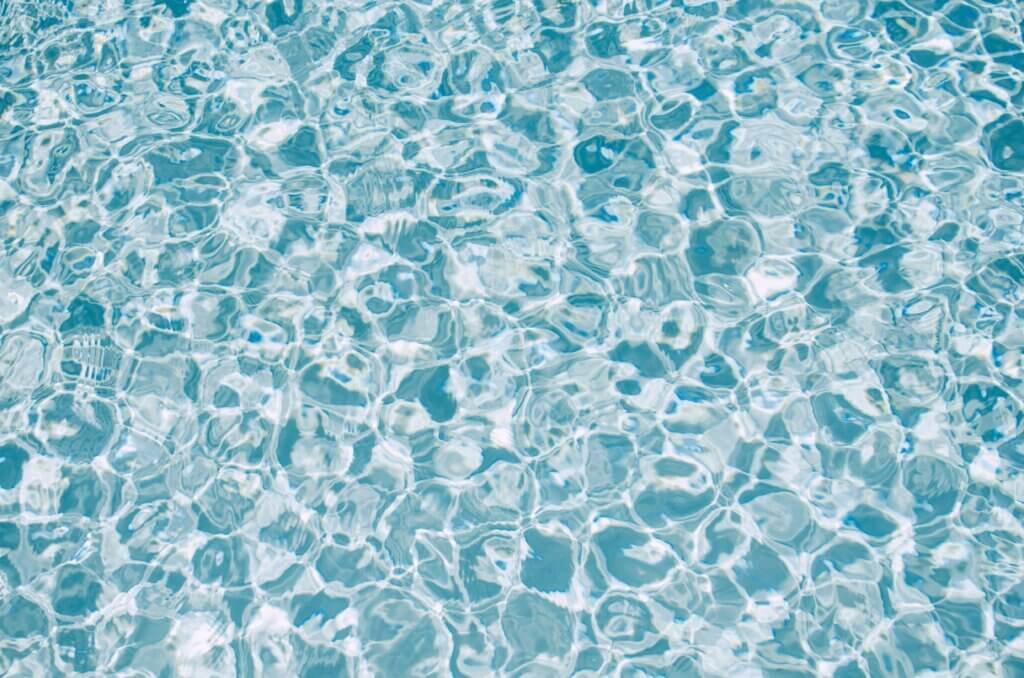
Implementing Water-Efficient Landscape Design
In addition to applying water-saving techniques, implementing water-efficient landscape design can significantly contribute to maximizing water efficiency in your garden. By incorporating features that promote water retention and minimize water runoff, you can create a more sustainable and water-wise outdoor space.
Creating a rain garden is an excellent way to utilize rainwater effectively and reduce water runoff. A rain garden is a depressed area in your yard that is designed to collect rainwater and allow it to be absorbed by the soil. By directing rainwater from downspouts or low-lying areas into a rain garden, you can capture and utilize this natural resource instead of allowing it to flow away. This helps to recharge groundwater, reduce stormwater runoff, and mitigate the risk of flooding.
Designing berms and swales is another effective technique for managing water flow and reducing erosion. Berms are raised mounds of soil, while swales are shallow ditches or channels. By strategically placing berms and swales in your garden, you can direct water runoff to specific areas, allowing it to be captured and absorbed by the soil. This helps to prevent water from flowing off your property and instead promotes its retention for the benefit of your plants.
Using retaining walls is another useful method for managing water flow and preventing erosion. Retaining walls can be used to create terraced areas in your garden, allowing for better water retention and controlled drainage. This is particularly beneficial if your garden is located on a slope, as retaining walls can help to prevent soil erosion and loss of water due to runoff.
Implementing terracing is another effective way to maximize water efficiency, especially on steep slopes. Terracing involves creating multiple level platforms or steps in your garden, which help to slow down water runoff and allow it to permeate into the soil. This not only reduces erosion but also enhances water absorption and retention. By creating terraces, you can transform a challenging landscape into an opportunity for water conservation.
Monitoring and Adjusting Water Usage
To ensure optimal water efficiency, it is important to monitor and adjust your water usage based on the needs of your plants and the prevailing weather conditions. By being mindful of water usage, you can avoid overwatering, prevent water stress, and promote healthy plant growth.
Monitoring soil moisture levels is a crucial aspect of water management. By regularly assessing the moisture content of your soil, you can determine when and how much to water. Various tools, such as soil moisture meters or simply using your finger to gauge soil moisture, can be used for this purpose. Aim to keep the soil evenly moist but not saturated, as different plants have different water requirements.
Using rain gauges is another helpful tool for monitoring water availability in your garden. Rain gauges measure the amount of precipitation that falls in your garden, allowing you to track rainfall and adjust your watering schedule accordingly. When rainfall is abundant, you can reduce or even skip irrigation to avoid waterlogging your plants. On the other hand, during dry periods, you may need to supplement rainfall with additional watering.
Adjusting your irrigation schedule according to weather conditions is key to water efficiency. During periods of high humidity or heavy rainfall, plants require less water as the soil retains moisture. On the contrary, during hot and dry weather, plants may require more frequent watering to compensate for increased evaporation rates. By adjusting your watering schedule based on the current weather patterns, you can provide water when it is needed the most and avoid wasteful overwatering.
Installing water meters can provide valuable insights into your garden’s water usage. Water meters measure the amount of water consumed, allowing you to track usage and identify areas where water conservation can be further improved. By understanding your water consumption patterns, you can make informed decisions about your watering practices and identify opportunities for optimization.
Considering water budgets is another effective approach for managing water usage in your garden. This involves determining the amount of water available for irrigation and allocating it based on the needs of your plants. By setting a limit on your water usage and maintaining a budget, you can prioritize water conservation and ensure that it is used efficiently throughout the growing season.
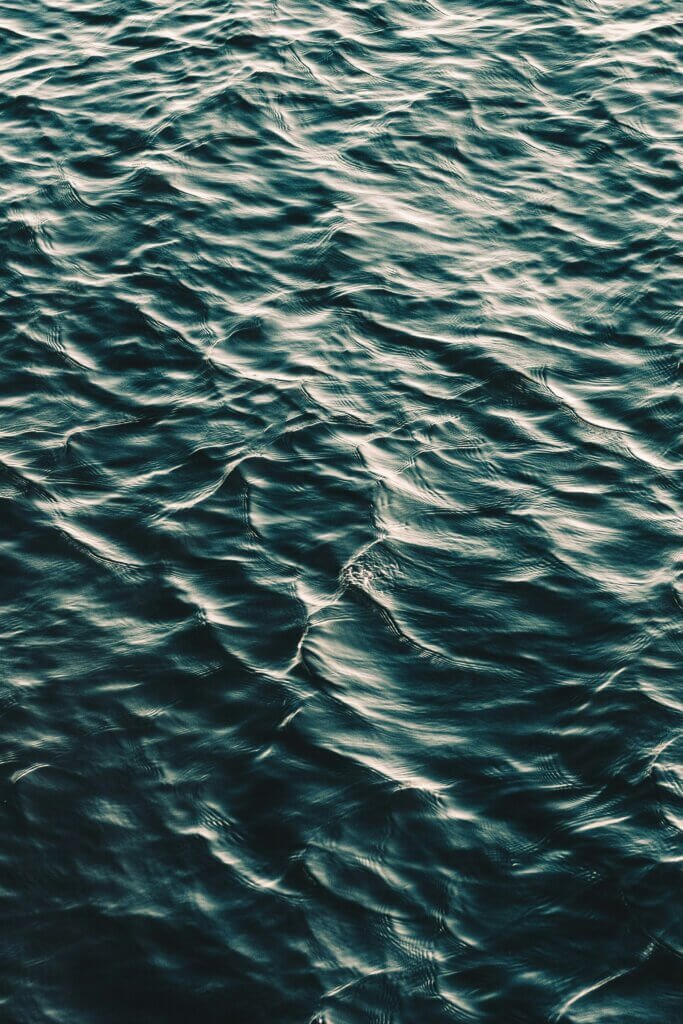
Using Efficient Garden Tools
In addition to implementing water-efficient practices and monitoring water usage, using efficient garden tools can further enhance water efficiency in your urban garden. By choosing tools that minimize water wastage and maximize water delivery to your plants, you can optimize water usage and reduce water consumption.
Opting for high-efficiency nozzles is one way to ensure that water is delivered precisely and efficiently. High-efficiency nozzles are designed to distribute water in a uniform pattern, minimizing overspray and evaporation. By using nozzles that deliver water directly to the base of plants with minimal wastage, you can maximize water efficiency and minimize water loss.
Using watering tools with flow controls allows you to regulate the amount of water being delivered to your plants. This ensures that water is used only as needed and avoids excess runoff or waste. Drip irrigation systems, for example, often come with flow control valves that allow you to adjust the flow rate, delivering water in a controlled and efficient manner.
Choosing battery-powered or solar-powered tools for your garden minimizes reliance on traditional energy sources and reduces your carbon footprint. Battery-powered watering tools, such as hose sprayers or sprinklers, provide the convenience of mobility without the need for electrical outlets. Solar-powered tools, on the other hand, harness the energy of the sun to operate, further reducing energy consumption and environmental impact.
Investing in water-efficient sprinklers is another smart choice to maximize water efficiency. Traditional sprinklers often result in excessive water wastage due to overspray or misting. By choosing sprinklers designed for water efficiency, such as rotary or oscillating sprinklers with adjustable patterns and flow rates, you can ensure that water is distributed evenly and effectively to your garden.
Collecting and Reusing Water
Collecting and reusing water is a sustainable and water-saving practice that you can incorporate into your urban garden. By capturing and utilizing water from various sources, you can reduce your reliance on treated water and contribute to water conservation efforts.
Using rain barrels is a simple and effective way to collect rainwater from your roof or gutters. Rain barrels are designed to capture and store rainwater for later use in your garden. By connecting a downspout to a rain barrel, you can collect and store significant amounts of rainwater during wet periods. The stored rainwater can then be used to supplement your irrigation needs during drier times, reducing the demand for treated water.
Capturing and reusing household water is another means of conserving water in your garden. Graywater, which refers to gently used household water from sources such as sinks, showers, or laundry, can be collected and reused for irrigation. By diverting graywater to your garden, you can give it a second life and minimize the need for fresh water. It is important to use biodegradable, eco-friendly soaps and detergents to ensure that no harmful chemicals are introduced to your plants or soil.
Reusing cold water from showers and sinks is a simple practice anyone can adopt to avoid wasting water. Before the water reaches the desired temperature, capture it in a bucket or container and use it for watering your plants. This not only saves water but also reduces your water bill and helps to conserve resources.
Recycling fish tank water is another way to repurpose water in your garden. Instead of pouring the water down the drain, use it to nourish your plants. Fish tank water is rich in nutrients, making it an excellent natural fertilizer. Simply transfer the water from your fish tank to a watering can or bucket and use it to irrigate your plants. This not only saves water but also provides your plants with beneficial nutrients.
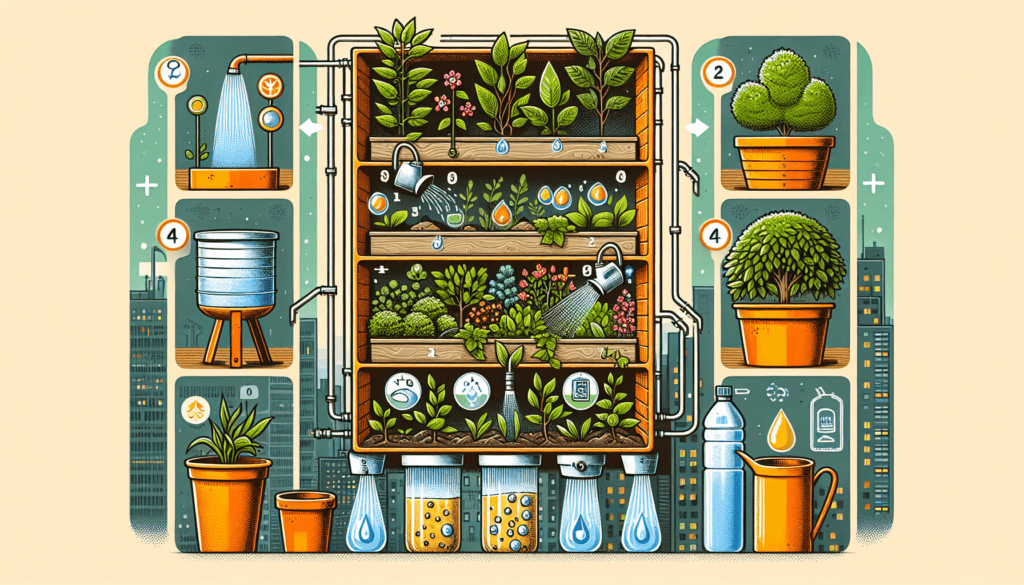
Incorporating Shade and Wind Barriers
Incorporating shade and wind barriers in your urban garden is not only aesthetically pleasing but also serves as a water-saving strategy. By strategically placing trees, shrubs, or other shading structures, you can create microclimates that reduce water evaporation and prevent wind from drying out your plants.
Planting trees and shrubs for shade provides a natural and sustainable way to protect your plants from excessive sun exposure. By casting shade on your garden beds, trees and shrubs help to reduce evaporation, lower soil temperature, and minimize water loss. Shade-loving plants, such as ferns or hostas, can also be incorporated into areas with limited sunlight to make the most of shaded conditions.
Using shade cloth or sails is another effective technique for providing shade in your garden. These lightweight and breathable materials can be stretched across structures, such as pergolas or trellises, to create shaded areas. By strategically placing shade cloth above delicate plants or in areas exposed to direct sunlight, you can protect your plants from the heat and reduce water loss due to evaporation.
Installing windbreaks is another way to conserve water in your garden. Wind can quickly dry out soil and increase water evaporation, especially in arid regions. By planting windbreaks, such as hedges or rows of trees, you can create a barrier that reduces wind speed and minimizes water loss. Windbreaks also provide additional benefits, such as reducing soil erosion and providing habitat for beneficial insects and wildlife.
Using hedges or fences can also serve as effective wind barriers in your garden. Dense hedges or fences can help to break up strong winds and create more sheltered conditions. By planting hedges or installing solid fences in wind-exposed areas, you can protect your plants and reduce the amount of water lost through wind-driven evaporation.
Educating Your Community
Sharing knowledge and promoting water-saving practices in your community is an essential step towards maximizing water efficiency in urban gardens. By educating and inspiring others, you can create a collective effort to conserve water and create more sustainable living environments.
Sharing water-saving tips with your neighbors, friends, and local gardening groups is a great way to start. Simple practices, such as watering at optimal times, avoiding overwatering, and using water-efficient tools, can make a significant difference in water consumption. By sharing these tips, you can encourage others to adopt water-conscious gardening practices and play their part in water conservation.
Promoting water-conscious gardening through community initiatives or online platforms is another effective way to reach a wider audience. By organizing workshops, webinars, or educational events focused on sustainable gardening practices, you can inspire and empower others to become water stewards. Sharing success stories of individuals or communities who have successfully implemented water-saving techniques can also serve as a source of inspiration and motivation.
Collaborating with local garden centers, nurseries, or environmental organizations can further amplify your efforts. By partnering with these entities, you can reach more gardeners and increase the impact of your educational initiatives. Consider hosting joint events or campaigns to raise awareness about water conservation and promote sustainable gardening practices in your community.
Highlighting success stories of water-efficient gardens and showcasing their impact can inspire others to follow suit. By featuring examples of urban gardens that have achieved significant water savings and lush growth with minimal irrigation, you can demonstrate the feasibility and benefits of water-conscious gardening. This can inspire others to take action and implement similar practices in their own gardens.
In conclusion, maximizing water efficiency in your urban garden requires a combination of thoughtful plant selection, smart irrigation techniques, soil health promotion, water-saving techniques, water-efficient landscape design, monitoring and adjusting water usage, using efficient garden tools, collecting and reusing water, incorporating shade and wind barriers, and educating your community. By adopting these practices and making water conservation a priority, you can create a sustainable garden that thrives with minimal water usage.
